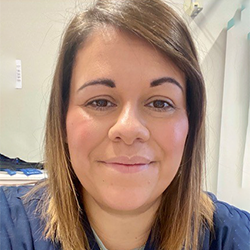
Christina Hamilton
Diabetes Nurse, working as an Education and Support Co-ordinator for Diabetes Ireland, Registered General Nurse (RGN), Registered Children’s Nurse (RCN), Registered Nurse Prescriber (RNP)
Type 1 diabetes is an autoimmune condition, which can be diagnosed at any age, including late adulthood. In children and adolescents, it can develop rapidly and be very dangerous if symptoms are not recognised early.
For reasons not yet fully understood, the body attacks and destroys pancreatic cells that produce insulin — a hormone, which makes your body able to produce energy from glucose.
Type 1 diabetes common symptoms
With no insulin, the body starts to starve and a person experiences TEST:
Thirst
Exhaustion
Sudden weight loss
Toilet trips increased
Delayed diagnosis can lead to medical emergency
A delay in the diagnosis of type 1 diabetes can result in a condition called diabetic ketoacidosis (DKA), which is very dangerous and can be even fatal if not treated on time. The symptoms of DKA include dehydration, vomiting, abdominal pain and difficulty breathing.
DKA is classed as a medical emergency; in addition to that, research is now showing that presenting in DKA at the time of diagnosis can result in poorer metabolic control and an increased risk of diabetes-related complications in the future.
In smaller children, symptoms might be
harder for parents and carers to catch.
Importance of recognising signs early
Ireland has a high incidence rate of type 1 diabetes in children and adolescents; on average, 25 children/adolescents are diagnosed with type 1 diabetes every month. According to the Irish Childhood Diabetes National Register, in Ireland, we observe very high rates of DKA at the time of diagnosis, too — 40% of children and adolescents learn about diabetes diagnosis while being hospitalised for DKA. This could be avoided if diabetes symptoms are recognised early.
The main symptoms of type 1 diabetes are extreme thirst, passing large volumes of urine, weight loss and lack of energy. In smaller children, symptoms might be harder for parents and carers to catch, so they should be aware of other, less common symptoms: bedwetting, constipation, increased hunger and irritability. These symptoms can be easily confused with other common childhood illnesses, which may lead to delayed diagnosis.
Getting tested for diabetes
The test for diabetes is easy — a simple urine and/or blood test can be done to confirm a diagnosis or suggest further steps. Most children/adolescents presenting to a GP with symptoms of diabetes will be diagnosed quickly. If you notice the symptoms of type 1 diabetes, contact your GP immediately.
Diabetes Ireland, in collaboration with the Irish Childhood Diabetes National Register and support from Novo Nordisk, aims to raise awareness of type 1 diabetes signs and symptoms as part of the TEST campaign to encourage earlier presentation and reduce the risk of DKA at diagnosis. For further information, visit diabetes.ie

